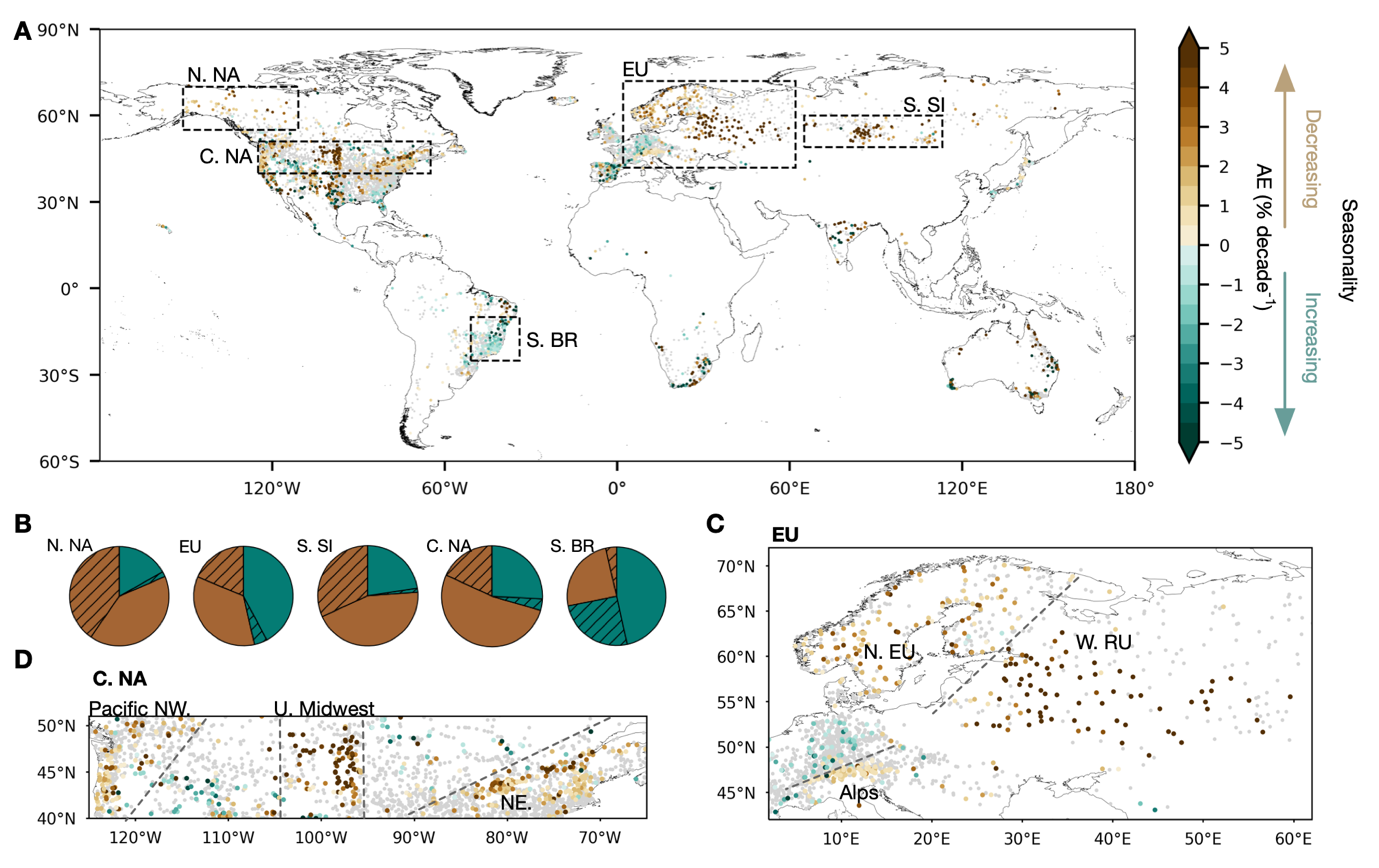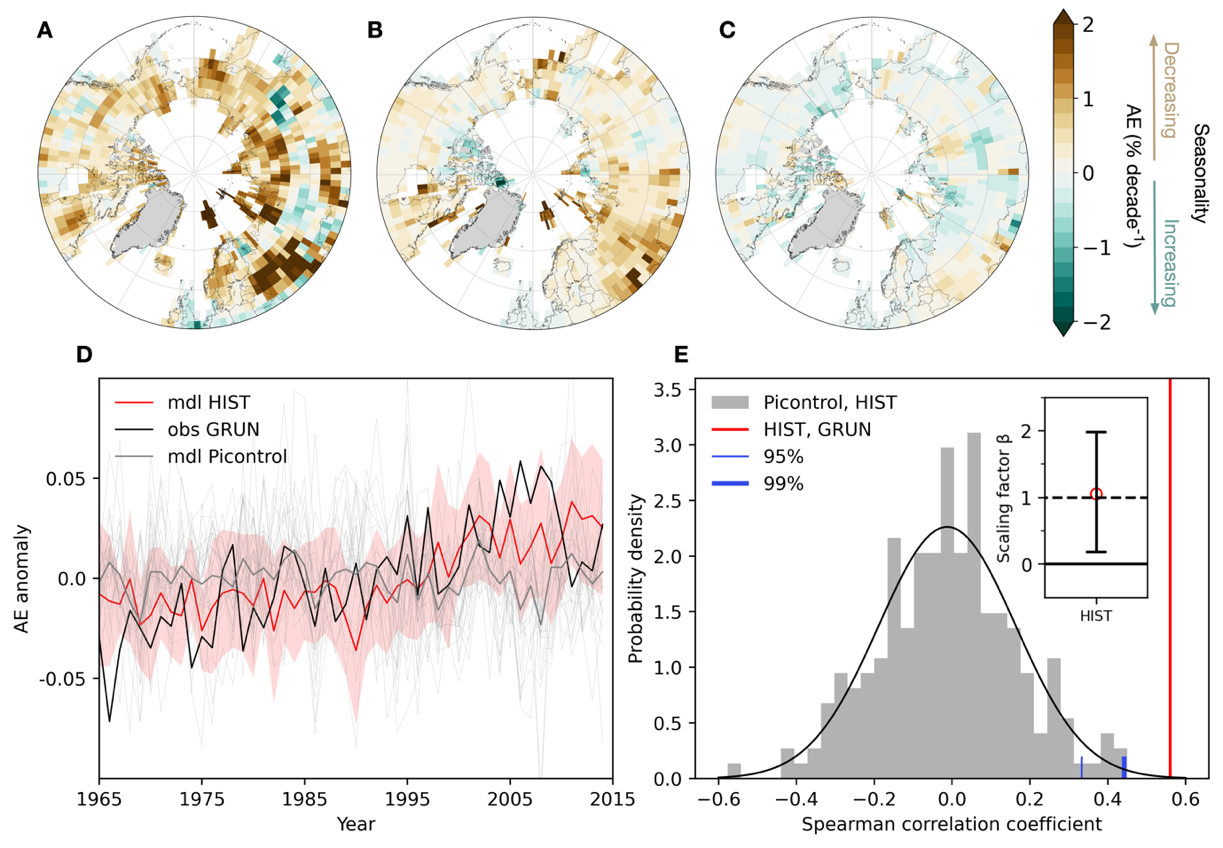River flow seasonality plays a critical role in the predicted cycle of floods and droughts. A weakening of these peaks and troughs can threaten water security and freshwater biodiversity. However, human activities are altering river flow patterns worldwide, both directly through flow regulations, and indirectly through land use change and the impacts of anthropogenic climate change on air temperature, precipitation, soil moisture, and snowmelt regimes.
Over two-thirds of the world’s rivers have already been altered by humans, even without considering the indirect impacts of anthropogenic climate change, which is characterized by human-induced alterations in greenhouse gases and aerosols. Yet, until now, evidence suggesting that climate change has had an impact on river flow seasonality has been limited to local studies or has failed to explicitly consider the impact of climate change brought about by humans.

Chair Professor Junguo Liu’s research team from the School of Environmental Science and Engineering (ESE) at the Southern University of Science and Technology (SUSTech) and Professors Joseph Holden and Megan Klaar from the School of Geography at the University of Leeds have recently published a paper showing that widespread reduction in river flow seasonality was driven by anthropogenic climate change.
The paper, entitled “Anthropogenic climate change has influenced global river flow seasonality”, has been published in Science, one of the world’s leading journals.
In this study, the team used apportionment entropy as a robust measure to assess monthly average river flow volume non-uniformity from 10,120 gauging stations from 1965-2014. The results showed that ~21% of long-term river gauging stations exhibit significant alterations in seasonal flow distributions, but two-thirds of these are unrelated to trends in annual mean discharge. In addition, a discernible weakening of river flow seasonality was identified in northern high latitudes (above 50°N) (Fig. 1).

Figure 1. River flow seasonality trends represented by apportionment entropy (% decade) in 1965-2014
By comparing data-based reconstructions and state-of-the-art simulations, the study showed that river flow is now far less likely to vary with the seasons in latitudes above 50°N than previously (Fig. 2). Climate change detection and attribution analysis further showed that this is directly linked to human-induced climate change at high confidence level with direct human intervention such as reservoirs, human water management, and land-use change excluded.
Possible climatic mechanisms that might drive flow-regime dampening under anthropogenic climate change include early snowpack depletion, loss of glacier extent, permafrost loss, increasing proportion of precipitation as rainfall, and shorter freezing periods, interacting with ocean-atmosphere oscillations. Furthermore, no significant trends of precipitation seasonality have been observed in the northern high latitudes, demonstrating that precipitation seasonality change cannot account for the results. It is likely that the observed rain-snow transition and increasing snowmelt under global warming led to a weakening trend of RFS in the northern high latitudes. The underlying physics behind this assertion is temperature-driven rather than precipitation-driven.

Figure 2. Comparison of apportionment entropy trends from observation-based reconstructions and global hydrological model simulations for 1965 to 2014 (% decade−1) in the northern high latitudes
This study presents changes in the seasonal cycles of river flow by adapting an apportionment entropy perspective and clearly demonstrates that decreased river flow seasonality is attributable to anthropogenic climate change in the northern high latitudes. It shows that rising air temperatures are fundamentally altering the natural patterns of river flow. The concerning aspect of this change is the observed weakening of river flow seasonality, which is a direct consequence of historical human-induced emissions. This signals a sustained and considerable diminishment of river flow seasonality if air temperatures continue to rise. It should be noted that water management might synergistically contribute to RFS dampening. Therefore, it is essential to develop mitigation strategies and adaptation planning to alleviate the future homogenization of seasonal river flow.
Joint Ph.D. student Hong Wang from the School of ESE at SUSTech and the School of Geography at the University of Leeds is the first author of this paper. Chair Professor Junguo Liu is the corresponding author, and SUSTech is the first affiliation. Other co-authors include Professors Joseph Holden and Megan Klaar from the School of Geography at the University of Leeds, Aifang Chen from the School of ESE at SUSTech, and Lukas Gudmundsson from the Institute for Atmospheric and Climate Science of ETH Zürich.
This study was supported by the National Natural Science Foundation of China (NSFC), Strategic Priority Research Program of the Chinese Academy of Sciences, Shenzhen Science and Technology Program, Henan Provincial Key Laboratory of Hydrosphere and Watershed Water Security, and the School of Geography at the University of Leeds.
Paper link: https://doi.org/10.1126/science.adi9501
To read all stories about SUSTech science, subscribe to the monthly SUSTech Newsletter.
Proofread ByAdrian Cremin, Yingying XIA
Photo BySchool of Environmental Science and Engineering